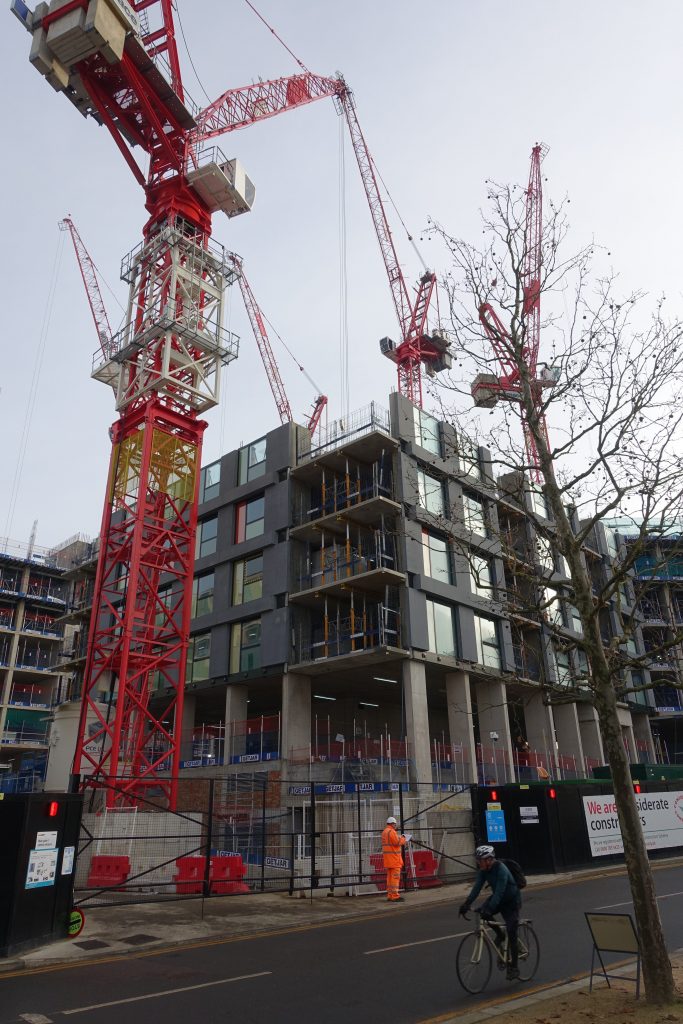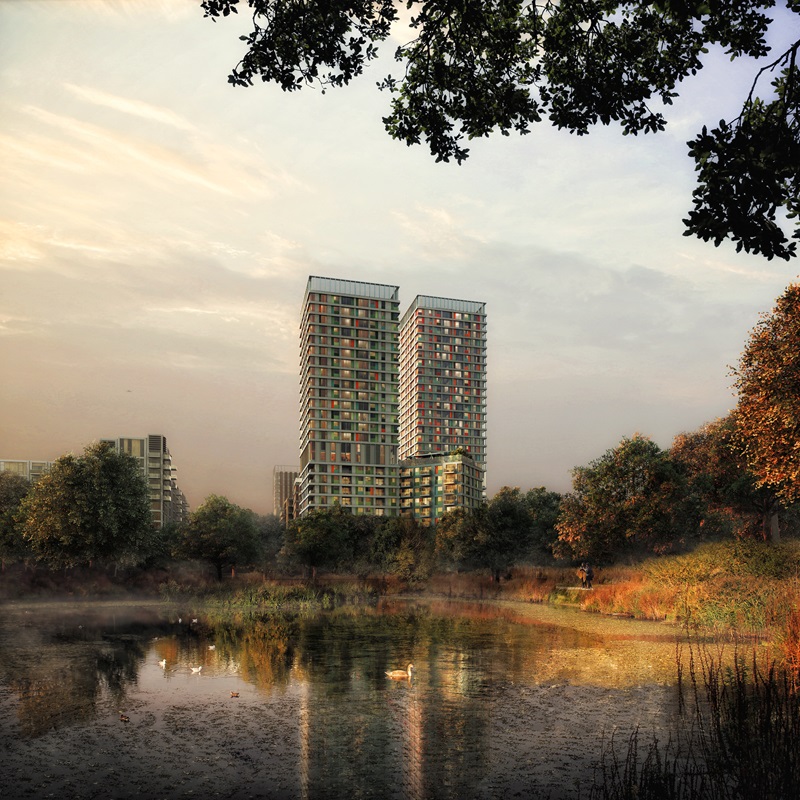Mace has developed its jumping factory into High Rise Solutions, an off-site based approach that turns construction into production.
To constantly pursue a better way – seemingly the mantra of construction specialist Mace – can result in good things being left behind. Take the company’s new High Rise Solutions (HRS) method for example. This off-site manufacturing solution for tall buildings offers substantial advantages over traditional means of construction.
Greater speed, safety, quality and optimal value are the claims made for HRS. The downside is that the method effectively replaces Mace’s jumping factory technique, much lauded at its launch two years ago (New Civil Engineer, June 2017), not least for the weather protection it gave operatives.
Innovation investment
The new HRS method of construction was unveiled in December by Mace Tech, Mace’s incubator business unit recently created to progress innovation. There was a sense that the cost of the first jumping factories was, in part, an investment. No disquiet was expressed at the money put into the concept.
“We’ve gained much from our jumping factory experience and gained valuable knowledge and data,” says Mace technical director Peter Goring. “This, plus our partnership with prefabricated high rise pioneer Hickory Group has meant we could develop HRS to achieve outstanding production line quality delivery of projects.”
One crucial advantage of HRS is that the method can be applied without the need for clients or architects to make any changes to their project designs. “It is virtually applicable to all high rise buildings,” Goring adds.
The HRS form of construction is surprisingly simple, based on the precision placing of precast concrete floor slabs. Those slabs – or modules – that form the perimeter of a building’s floor are lifted in complete, with that storey’s façades in place. Then come the internal slab modules equipped with permanent columns and temporary struts to support the next floor.

Prefabricated floor slabs and internal floor modules are craned into position on site
The internal modules also include provision for the building’s access and services core, for domestic utility pods such as bathrooms and also lift shafts. Each floor module weighs between 18t and 24t, and is brought to site by lorry, offloaded and craned into position. Turnaround is about
30 minutes.
“The methodology is similar to that employed in other industrial sectors,” Goring says. “The components are of consistently high quality, having been created along an assembly line in an off-site production facility and then delivered to site to meet a just-in-time schedule.”
Minimising site operatives
Operatives on site are kept to a minimum, perhaps 25% less in number than required by traditional construction. Prefabrication removes the need for something like 12 trades during building work, “improving efficiency and reducing on-site movement”, according to Goring.
That said, the PPE of people working on an HRS tall building gets wet when it rains, unlike that of those who worked on jumping factory structures, where vast tents kept things dry. So why were these covers abandoned?
“The tents were cumbersome, not easy to put up plus expensive to take down,” says Mace project director Tony Blackledge. “The jumping factory concept was innovative overall but HRS is more efficient, more sophisticated and at least as safe for operatives.”
Which makes a good point. According to Mace Tech, the jumping factory tents were as much and more about preventing people and things dropping from height as they were about weather proofing. With HRS, the perimeter floor and facade modules go up first to provide the same level of security. They also give shelter from the wind.

Artist’s impression of the new towers
The launch of HRS took place in front of existing and possible future clients of Mace Tech. Considerable interest was expressed in the presentation, credibility being given to the company’s words by the event taking place on a site, next to two tower blocks under construction using HRS.
NO6 East Village alongside in Stratford, London, will provide 524 apartments in all, the site’s towers being of 25 and 30 stories respectively. Completion of the project is due by June 2021. Viewed from the ground, the quality of the structures seems exceptional.
“All our modules are cast off-site at Oranmore Precast’s manufacturing facility at Brandon,” says Goring. “Quality control is excellent, aided of course by the fact that inspection of each module takes place at ground level, not high in the air as with traditional forms of building.”
Client for NO6 East Village is Qatari Diar Delancey. Was reduced cost a factor in its decision to opt for HRS? “No,” says Goring. “The towers are virtually cost neutral, but we are able to deliver them more quickly which has its obvious attractions. We expect to bring costs down in future as we and our supply chain become more practiced with the method.”
Eleven step process
Mace Tech’s technical literature on HRS states there are 11 “steps” to the process, including tender, HRS concept design, modelling for manufacture, construction documentation and the manufacturing of elements. The list is heavily weighted to pre-site activity. Site installation comes in at step 10.
Mace Tech claims that with HRS, construction is 25% faster, waste is 75% less and deliveries to site cut by 40% – significantly reducing carbon emissions from heavy goods vehicles.
The company claims that independent research confirms its method presents a sustainable construction solution in comparison with others.
Using fewer carbon intensive materials, less energy and less water are cited as benefits. Environmental impact and noise pollution are kept to a minimum.
Optimising structure and facade elements is fundamental to HRS, Mace Tech says, but development is not stopping there. It wants to maximise bespoke offsite pre-manufacture and assembly of other building types and components – these last to include pre-serviced partition walls, kitchens and wardrobes plus fully fitted plant rooms.
Mace Tech’s ambition is to pre-manufacture and assemble 75% to 80% of all project components.
Goring states that the heavy emphasis on planning plus achieving the high quality and tight tolerances inherent to the HRS method pays dividends. “It enables us to guarantee the outcomes of programme, cost, quality and overall value. There is little for clients not to like.”
Like what you’ve read? To receive New Civil Engineer’s daily and weekly newsletters click here.


